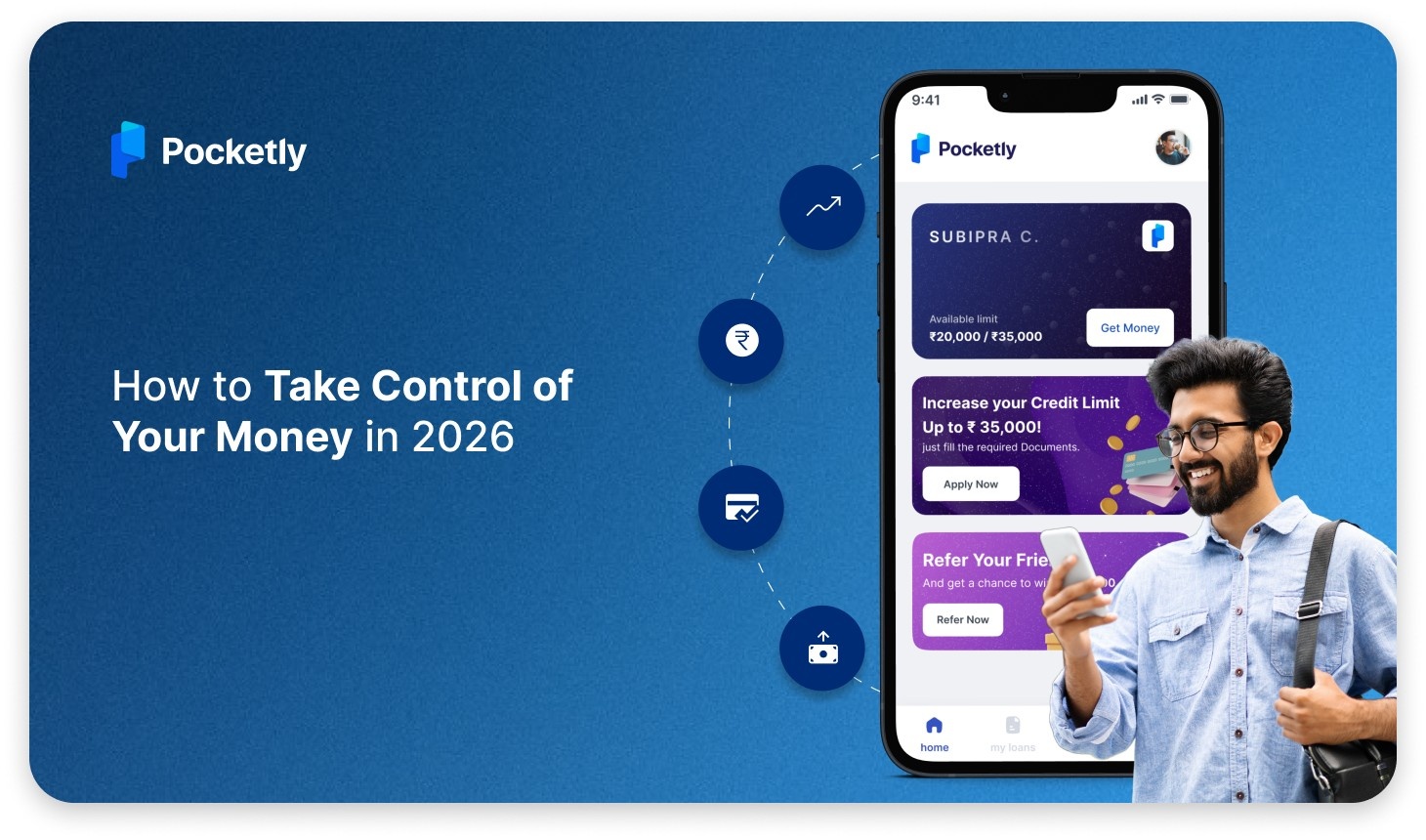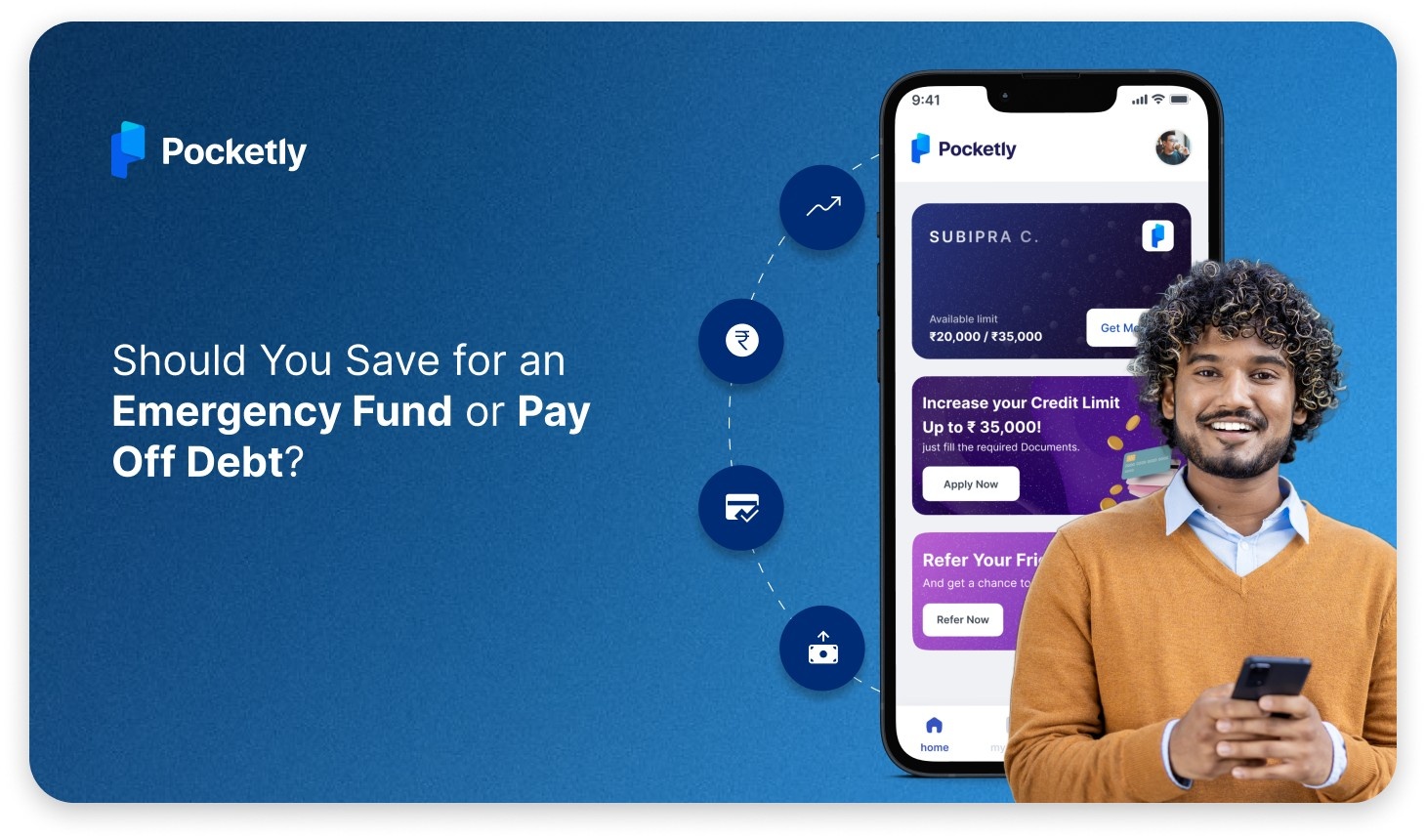
Thinking of closing your personal loan before the end of its tenure? You’re not alone. Many borrowers choose to pre-close their loans once they have the financial means to do so, and for good reason.
Pre-closure, or foreclosure of a personal loan, means repaying your loan in full before the scheduled repayment period ends. This can help you save a substantial amount of interest, reduce your overall debt burden, and may even boost your credit score over time.
However, before you rush to pay off the remaining balance, it’s essential to understand the full picture, including charges, procedures, and any relevant documents involved. Some lenders impose pre-closure fees, and missing a step could lead to delays or impact your credit record.
In this guide, we’ll walk you through everything you need to know about pre-closing your personal loan—from understanding the process to the benefits, potential costs, and the documents you'll need to get it done smoothly.
Understanding Personal Loan Pre-Closure
Personal loan pre-closure, also known as loan foreclosure, is the process of repaying your entire outstanding loan amount in one go, before the official end of your loan tenure. Instead of continuing to pay EMIs every month until the final due date, you clear your dues in full and formally close the account.
This is usually done when a borrower receives additional funds, through savings, bonuses, or other income, and prefers to pay off the debt early. While it might seem as simple as making a big payment, pre-closure involves following your lender’s procedure and, in many cases, paying a small fee.
Why Is Pre-Closure Important?
- Saves on Interest Costs: Since interest on personal loans is calculated monthly, closing the loan early can significantly reduce the total interest paid, especially if done in the first half of the tenure.
- Improves Credit Health: Paying off a loan early can reflect positively on your credit score, as it shows financial discipline and reduces your overall debt-to-income ratio.
- Reduces Long-Term Financial Burden: Without the commitment of monthly EMIs, you free up your cash flow, which can be used for savings, investments, or other important financial goals.
- Offers Peace of Mind: There’s real psychological relief in being debt-free. Pre-closure can help you feel more in control of your finances and less anxious about monthly dues.
Key Features and Benefits of Personal Loan Pre-Closure
Pre-closing a personal loan isn't just about clearing debt early—it’s also a strategic financial move that can lead to long-term savings and improved credit health. However, it’s essential to understand the key features of this process and the practical benefits it offers so that you can make an informed decision based on your financial goals.
Here’s a closer look at what makes personal loan pre-closure worthwhile:
Key Features
- One-Time Full Repayment: The borrower pays the entire outstanding balance in a single payment, including any applicable foreclosure charges.
- Applicable After Lock-In Period: Most lenders allow pre-closure only after a minimum number of EMIs (often 6–12 months) have been paid. This is known as the lock-in period.
- May Incur Pre-Closure Charges: Lenders typically charge a small percentage (usually 2%–5%) of the outstanding loan amount as a penalty for early closure.
- Requires Formal Procedure: Pre-closure isn’t automatic. Borrowers must submit a written request, repay the remaining balance, and collect a loan closure certificate or NOC.
Benefits
- Significant Interest Savings: Since interest is calculated on the remaining principal over time, paying early means you pay less in total interest, especially if done in the first half of the loan tenure.
- Boosts Your Credit Score: Closing a personal loan early shows financial discipline, which can positively impact your CIBIL or credit score, making it easier to secure future loans.
- Eliminates Monthly EMI Commitments: Pre-closure means no more monthly instalments, freeing up your cash flow and giving you more control over your finances.
- Peace of Mind: Clearing off debt early can provide a sense of relief and reduce financial stress, especially if you have multiple obligations.
- Reduces Total Debt Load: By clearing one loan off your books, you improve your debt-to-income ratio, which can benefit you when applying for new loans or credit cards.
Pre-closing your personal loan can be a smart financial decision, offering savings, freedom from monthly EMIs, and a stronger credit profile, provided you understand the process and associated costs.
Types of Personal Loan Pre-Closure
When it comes to paying off a personal loan early, borrowers typically have more than one option. Depending on your financial situation, you may pay off the entire balance at once or make a partial payment to reduce your EMI burden. Understanding the different types of closures can help you decide the most effective way to reduce your debt faster.
Below are the three main types of personal loan closures and how each one works:
1. Regular Closure
What is it?
Regular closure refers to completing the loan as originally agreed, by making every EMI (equated monthly instalment) over the full loan tenure.
How it works:
You continue paying the fixed EMIs each month for the entire duration of the loan—say, 12, 24, or 36 months—until the full principal and interest are paid off. No lump sum or early repayment is made.
Benefits:
- You don’t incur any pre-closure or additional charges.
- It keeps your finances predictable and manageable with fixed monthly outgoings.
- It’s suitable if you prefer structured, gradual repayment and don’t have surplus funds for early closure.
Example: You borrow ₹2,00,000 for 24 months and pay ₹9,500 per month for 2 years. Once the 24th EMI is paid, your loan is closed regularly.
2. Full Pre-Closure (Foreclosure)
What is it?
Full pre-closure or foreclosure means repaying the entire outstanding balance of your personal loan in one go, before the official loan tenure ends.
How it works:
You contact your lender to request the total outstanding balance, which includes the principal and any applicable foreclosure charges. After paying the full amount, the loan account is closed. This is typically allowed only after a set number of EMIs (e.g. 6 or 12) have been paid, depending on your lender's terms.
Benefits:
- You save a considerable amount of interest, especially if you pre-close early in the tenure.
- You free yourself from future EMI obligations, giving you more financial flexibility.
- It reflects positively on your credit profile, as it demonstrates strong repayment capability.
- The sense of being debt-free can reduce financial stress and support better long-term planning.
Example: You borrowed ₹3,00,000 for 3 years. After 12 EMIs, you have some extra funds and can pay off the remaining ₹2,10,000, including any applicable charges. The loan is closed a year early, saving you months of interest.
3. Part-Payment
What is it?
Part-payment refers to making a lump sum payment towards the principal amount of your personal loan, while continuing with monthly EMIs on the reduced balance.
How it works:
You make a one-time payment that reduces the total amount of the outstanding loan principal. Your EMIs may either decrease or remain the same while your loan tenure shortens—this depends on the lender's policy. It doesn’t close the loan entirely, but it reduces your financial burden.
Benefits:
- Your overall interest liability reduces because it’s calculated on a lower outstanding amount.
- You can either enjoy smaller EMIs or pay off the loan sooner, depending on the repayment structure you choose.
- It's a great way to reduce debt if you receive a bonus or have surplus funds but can’t afford to pre-close the full amount.
- It improves your debt management without requiring a full commitment to foreclosure.
Example: Your remaining loan balance is ₹2,00,000. You pay ₹50,000 as a lump sum. Now, you either continue the same EMI for a shorter period or pay a smaller EMI for the rest of the tenure, based on your lender’s terms.
Choosing the right type of loan closure depends on your current financial health, available funds, and long-term goals.
Charges Involved in Pre-Closure of a Personal Loan
While pre-closing your personal loan can help you save a considerable amount of interest, it may also come with certain costs. These are often in the form of foreclosure charges and taxes imposed by the lender, which vary depending on the bank or NBFC, the loan type, and the timing of account closure.
Understanding these charges is crucial to determine whether pre-closure is a financially wise move for you.
1. Foreclosure Charges
What is it?
Foreclosure charges are a fee levied by the lender when you choose to repay the loan before the end of the agreed tenure. It typically ranges between 2% to 5% of the outstanding principal.
Example:
Suppose you took a personal loan of ₹3,00,000 for 3 years. After paying EMIs for 12 months, your outstanding loan amount is ₹1,90,000. If your lender charges a 3% foreclosure fee, the charge would be:
₹1,90,000 × 3% = ₹5,700
You’ll have to pay ₹1,90,000 (principal) + ₹5,700 (foreclosure fee) = ₹1,95,700 to close the loan.
2. Variability of Charges Across Lenders
What is it?
Different lenders have different policies. Some may charge a flat foreclosure rate; others may reduce or waive the charge after a certain number of EMIs. It also depends on whether your loan is on a fixed or floating interest rate.
Example:
- Lender A charges a 4% foreclosure fee throughout the tenure.
- Lender B charges 4% if you pre-close before 12 EMIs, but waives it entirely if you pre-close after that.
- Lender C allows free pre-closure on floating-rate loans but charges 2% for fixed-rate loans.
So, if you’re pre-closing after 15 EMIs with Lender B, you might not pay any charges, while with Lender A, you’ll still pay 4%.
3. GST and Additional Costs
What is it?
Foreclosure charges attract 18% GST, which increases your overall payout. In rare cases, some lenders may also add administrative fees.
Example: Using the earlier example, where your foreclosure charge is ₹5,700:
GST @18% = ₹1,026
Total payable = ₹1,90,000 (principal) + ₹5,700 (fee) + ₹1,026 (GST) = ₹1,96,726
This shows how tax can impact your decision, so don’t forget to include it in your cost-benefit analysis.
4. Requesting a Foreclosure Statement
What is it?
Before making the payment, it’s essential to request a foreclosure statement from your lender. This document shows the final outstanding balance, applicable charges, and the exact amount to be paid.
Example:
You contact your bank to pre-close your loan. They provide a foreclosure statement that says:
- Outstanding principal: ₹1,75,000
- Foreclosure fee: ₹5,250
- GST: ₹945
- Total Payable: ₹1,81,195
This statement acts as your official quote and ensures transparency when settling your loan.
Now that you understand the costs involved, let’s move on to the next section where we break down the exact steps you need to follow to pre-close your personal loan successfully. Ready?
Procedure for Pre-Closing a Personal Loan
Pre-closing your personal loan isn’t just about walking into a bank and making a payment. There’s a proper process that ensures your loan is settled cleanly and is marked as “closed” in your credit report. Following the correct steps also helps you avoid any future disputes or errors with the lender.
Here’s a step-by-step guide to help you complete the pre-closure smoothly and confidently:
1. Review Your Loan Agreement
Before initiating pre-closure, go through your original loan agreement. Check for:
- The minimum number of EMIs that must be paid before pre-closure is allowed (this is often 6 or 12 months).
- Applicable foreclosure charges or conditions.
- Whether any advance notice is required.
Example: Your loan agreement may state that you must complete 12 EMIs before applying for pre-closure and that a 3% foreclosure fee will apply.
2. Request a Foreclosure Statement
Contact your lender (via branch, customer care, or app) and ask for a foreclosure statement or settlement amount. This document will include:
- The exact outstanding loan balance
- Any applicable pre-closure fees and taxes
- The total amount you need to pay to close the loan
- Validity period of the statement (usually a few days)
Tip: Always request this in writing or via email so you have a formal record.
3. Collect Necessary Documents
You’ll need to submit a few documents to proceed with pre-closure. These typically include:
- A valid identity proof (e.g. Aadhaar card, PAN card, driving licence)
- Your latest loan account statement
- A cheque or online payment confirmation for the total closure amount
Your lender may also ask you to fill out a pre-closure request form.
4. Visit the Bank (If Required) or Pay Online
Depending on your lender, you may need to visit the nearest branch to complete the pre-closure process, especially for signature verification or submitting documents. Some NBFCs and digital lenders allow you to complete the entire process online.
Make the full payment as per the foreclosure statement, either via:
- Cheque or demand draft
- Internet banking
- UPI or debit card (if the platform supports it)
5. Obtain a Loan Closure Certificate / NOC
Once the payment is confirmed, ask the lender to issue a:
- Loan Closure Certificate – stating the loan is fully paid and closed
- No Objection Certificate (NOC) – confirming that the lender has no further claim on you
Keep both documents safe. You may need them in the future for credit reporting, property purchases, or legal verifications.
Documents Required for Personal Loan Pre-Closure
To successfully pre-close your personal loan, you'll need to provide a few important documents. These help the lender verify your identity, confirm your loan details, and ensure the pre-closure process is legitimate and properly recorded.
Whether you complete the process online or at a branch, having the right paperwork ready can save time and avoid delays. Here’s a list of the commonly required documents:
| Document | Purpose |
|---|---|
| Loan Account Statement | Shows your EMI history and confirms the outstanding loan amount. |
| Identity Proof |
To verify your identity. Acceptable options include:
|
| Pre-Closure Request Form | Some banks require a signed form requesting loan pre-closure. |
| Foreclosure Statement | Provided by the lender; includes the total payable amount and charges. |
| Payment Proof | Receipt, bank confirmation, or transaction reference number after payment. |
| PAN Card (If not already submitted) | Required for tax records and verification, especially if not shared earlier. |
Tip: If you're visiting a bank branch, it's a good idea to carry both originals and photocopies of the documents listed above.
Next, we’ll go over a few key considerations before you opt for pre-closure, just to be sure you’re making the most financially sound decision.
Considerations Before Opting for Pre-Closure
While pre-closing a personal loan can seem like a smart move, it’s important to take a step back and evaluate the financial impact. Closing your loan early may offer benefits like interest savings, but it also comes with certain charges and strategic implications. Weighing these factors beforehand ensures you're making a choice that aligns with your overall financial goals.
Key Points to Consider:
- Compare Interest Saved vs. Pre-Closure Charges: Make sure the amount you save in interest outweighs any foreclosure fee or tax. Sometimes the cost of early repayment may reduce the benefits.
- Check for Lock-in Periods: Some lenders don’t allow pre-closure until a minimum number of EMIs have been paid. Confirm this in your loan agreement to avoid rejection or penalties.
- Maintain Emergency Funds: Don’t exhaust all your savings to close a loan early. It's important to keep enough funds aside for unexpected expenses or emergencies.
- Impact on Credit Score: While early repayment often improves your credit score, closing a long-standing active loan could slightly affect your credit mix. It’s generally positive, but worth noting.
- Plan for Other Financial Goals: Consider how pre-closure fits into your broader financial picture—like saving for a home, emergency fund, or investment plans.
Once you’ve thought through these factors, you’ll be in a better position to decide whether pre-closing your loan is truly the best step forward.
Smart Tips to Make the Most of Your Personal Loan Pre-Closure
Pre-closing your personal loan is a great financial step, but how you go about it can make all the difference. A few smart decisions before and after pre-closure can help you maximise benefits, avoid unnecessary costs, and strengthen your financial profile.
Here are some practical tips to keep in mind:
- Time It Right: The earlier you pre-close your loan (after the lock-in period), the more you’ll save on interest. Aim to pre-close during the first half of your tenure for maximum savings.
- Request a Foreclosure Quote in Advance: Always ask your lender for a detailed quote that breaks down the exact amount payable. This avoids miscommunication or last-minute surprises.
- Negotiate Foreclosure Charges: Some lenders may be open to waiving or reducing pre-closure charges, especially if you’ve had a good repayment track record. It never hurts to ask.
- Keep All Receipts and Certificates Safe: After pre-closure, store your loan closure certificate and No Objection Certificate (NOC) safely. These documents may be needed if disputes arise or when applying for future loans.
- Check Your Credit Report: A few weeks after closure, check your credit report to ensure the loan status is updated as “closed” and not just “settled” as the latter may negatively affect your score.
- Avoid Draining Your Entire Savings: If pre-closure puts pressure on your emergency fund, consider part-payment instead. It offers savings without fully exhausting your financial buffer.
- Use Pre-Closure to Rebalance Debt: Clearing one loan early can make space for other important financial goals or reduce the stress of handling multiple EMIs.
By following these tips, you can turn a simple loan pre-closure into a strategic financial win, saving more, protecting your credit, and gaining peace of mind.
Life doesn’t always go as planned. Whether it’s a car EMI due tomorrow, a surprise medical bill, or a forgotten course fee, you need more than just a loan. You need fast, reliable support. That’s where Pocketly comes in. With instant approvals, flexible repayment, and zero paperwork, Pocketly makes borrowing easy when time isn’t on your side.
Let’s break down how you can quickly apply for a personal loan as a salaried individual via Pocketly and make the process seamless:
How to Apply for an Instant Personal Loan with Pocketly
Applying for an instant personal loan is super fast. Here's a step-by-step guide to walk you through the process:
Step 1: Download and Register
Start by downloading the Pocketly app from the App Store or Play Store. Once downloaded, register with your mobile number to create your account and get started.
Step 2: Submit Required Documents
After registration, upload the necessary documents, such as your Aadhaar card, PAN card, and proof of income. Ensure the documents are clear and accurate to avoid delays in the approval process.
Step 3: Complete KYC Verification
To verify your identity, upload your PAN card and complete the KYC verification process. This ensures that your application is valid and ready for the next steps.
Step 4: Add Your Bank Account
Enter your bank account details to ensure quick and secure disbursement of the loan. This allows the loan amount to be transferred to your account without any issues.
Step 5: Choose Your Loan Amount and Repayment Tenure
Select the loan amount you need and pick a repayment tenure that works for you. Pocketly offers flexible options to ensure you can tailor the loan to your financial situation.
Step 6: Receive the Funds in Your Account
As the loan amount is successfully approved, the amount will be transferred to your bank account. The process is fast and hassle-free, so you can access the money quickly when you need it most.
Also, read our detailed guide on Personal Loan Options for a 20000 Salary.
Conclusion
Pre-closing a personal loan can be one of the smartest financial decisions you make, helping you save on interest, reduce monthly stress, and boost your credit health. However, it’s essential to understand the process, be aware of any fees, and prepare the necessary documents before making the leap.
Whether you choose full pre-closure or part-payment, planning ahead and weighing the pros and cons will help you make the most of it. And when the need for quick, flexible financing arises again, having a trusted lending partner makes all the difference.
Need funds fast for an upcoming EMI or unexpected expense? Pocketly has your back—with instant approvals, low documentation, and flexible repayment plans, right when you need it.
Download the Pocketly app today and take control of your finances—smartly and stress-free.
FAQs
Can I pre-close my personal loan at any time?
Most lenders allow pre-closure only after you’ve completed a minimum number of EMIs, usually 6 to 12 months. Check your loan agreement or ask your lender to confirm the lock-in period.
Do I have to pay any charges for pre-closing a personal loan?
Yes, many lenders charge a foreclosure fee—typically 2% to 5% of the outstanding loan amount—along with 18% GST. Always ask for a foreclosure statement to see the exact charges before proceeding.
Will pre-closing my loan improve my credit score?
It can, yes. Paying off your loan early reduces your total debt and shows financial discipline, which may positively impact your credit score over time.
Can I get a personal loan with a low CIBIL score?
Yes, it’s possible, though your options may be limited. Pocketly considers more than just your credit score and offers solutions for salaried individuals with lower CIBIL scores.
Can I get a ₹25,000 personal loan as a salaried employee?
Absolutely. With Pocketly, salaried employees can apply for loans starting from ₹1,000 up to ₹25,000, depending on eligibility.
What’s the best personal loan for salaried individuals?
The best personal loan is one that offers quick disbursement, low interest rates, and flexible repayment options. Pocketly provides all these features with a simple and fast application process tailored for salaried employees.


















